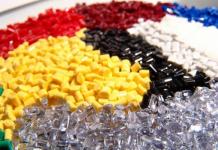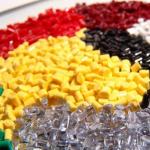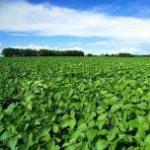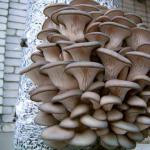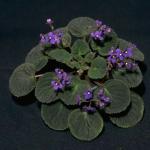First you need to rent a small factory or part of a production facility outside the city. Mandatory conditions: good transport accessibility, convenient access roads, area not less than 200 sq.m. Electricity at 380 volts, sewerage, water supply must be carried out.
It is important to provide for several zones separated from each other:
- manufacturing facility;
- warehouse complex;
- bathroom;
- premises for employees.
Taking into account the fact that the pipe production line includes high and heavy equipment, the ceiling height should be at least 10 m. Powerful air conditioners and fire protection systems should be installed in the workshop. The warehouse must have normal humidity and room temperature.
Hiring and organizational issues
When organizing a line of standard size and equipment, it is necessary to hire about six people for the staff. This is necessary to ensure uninterrupted production (three employees per shift).
In addition, it is necessary to hire an accountant, auxiliary workers, a process engineer, two machine operators. Thus, the list of monthly expenses will need to include $ 6,000 as wages to employees.
Since the HDPE pipe manufacturing business belongs to the category of technically complex industries, at the stages of its organization it will be necessary to obtain permission from the local administration, the Sanitary and Epidemiological Station, the State Energy Supervision Authority, and the fire inspectorate. As for registration, the optimal form is LLC.
Equipment for the production of polyethylene pipes
You can buy both new and used equipment of domestic or foreign production. When buying a Russian-made line, you can save some money.
List of required line components:
- dryers;
- automatic loader;
- screw extruder;
- containers for cooling blanks;
- conveyor;
- coronator;
- device for marking products;
- control system;
- auto stacker;
- vacuum calibrator.
Raw materials for the production of polyethylene pipes
Products for the manufacture of HDPE pipes are selected individually. High-quality raw materials are polymers of different pressures, polypropylene, polyvinyl chloride,.
Raw materials should be ordered from trusted suppliers. The highest quality and most reliable brands are Hastalen 5416 (Bazell), Vestalen 9412 (SABIC) imported.
Technology for the production of polyethylene pipes
The pipe manufacturing process is based on the extrusion method. The essence lies in the homogenization of raw materials in order to soften them in a special device - an extruder. With the help of spinnerets of the equipment, the pipe is formed to the set diameter with their subsequent cooling.
In the first step, the material is placed into the extruder receiving device. Next, the raw material moves into a preheated cylinder. Gradually, the material is transferred to the hottest parts of the cylinder, slowly warming up.
Thus, the cylinder consists of three components: a feeder, a raw material compression zone, and an output zone. The high quality of the extruder die is important, since it is on it that the dimensions of the finished pipes depend. It must be maintained at a fixed temperature.
After passing the raw material through the cylinder and obtaining blanks, they are placed in a container for vacuum forming under pressure. Then the pipes are removed from the cooling chamber and, to prevent its deformation, they are immediately transferred to the conveyor.
At the final stage, the pipes are cut and laid in prepared bays. For cutting, special saws or cutters are used (depending on the selected diameter).
Investments and income
In order to launch the production of HDPE pipes, at least $140,000 will be required. This includes the cost of monthly rent, wages, renovation of the rented premises, purchase of equipment and raw materials.
The price of a finished unit of production depends on its type. In this case, the rule applies: the larger the diameter, the more expensive the product.
With the full sale of products, the monthly income can be up to $ 6,000. The investment pays off in about 2 years.
Polyethylene is serious business. It requires not only large financial investments, but also professional knowledge in the field of production, experience in managing a large organization.
Related video:
- (184)
- (102)
To consider the topic of the manufacture of polypropylene pipes and fittings for water supply and heating pipelines, it is necessary with a preliminary detailed description of the materials used for production.
Polypropylene pipes and fittings have a lot of advantages that distinguish them from their steel counterparts:
- they are much lighter;
- not susceptible to corrosion;
- do not grow inside during use;
- do not create vibration and rumbling, as well as other noises;
- do not burst when the water in the system freezes;
- do not conduct electricity;
- do not need painting;
- very easy to work with.
Pipes and fittings made of polypropylene can work for decades. These are environmentally friendly products that are successfully used for pipelines of any complexity. Therefore, their production and manufacture is widely established throughout the world.
The use of fittings with chrome and brass inserts allows combine these blanks with steel pipes.
The construction of these materials is very tight, and this application brings tangible economic benefits.
A little about polypropylene
Polypropylene is the initial product of the polymerization of propylene and ethylene in specific quantities. The resulting material is named random copolymer PPRC.
In the domestic market today there is no worthy analogue to foreign polymers. We use Finnish RA 130E BOREALIS and Hungarian TIPPLEN CS4-8000 TVK for the manufacture of polypropylene pipes.
The essence of the pipe manufacturing process is simple, and it is not very laborious. Speaking about it, the following features should be highlighted:
- low energy costs in manufacturing;
- ecological safety;
- for the production, installation and use of one set of a line for the production of polypropylene pipes and fittings, a lot of space is not needed (this is approximately 100 m 2);
The set of polypropylene pipe extrusion line is a complete cycle of extrusion, calibration, cooling, drawing, etc.
Raw material for work
Lines for the production of plastic pipes, in addition to the extruder, also have the following equipment:
- raw material supply system.
- A machine that cuts blanks.
- Tank for calibrations and cooling.
- Pulling mechanism.
- Mixer.
- Conveyor tape.
- Vacuum forming.
- Accumulating mechanism that performs the stacking of blanks.
Raw material selection
When choosing raw materials, they opt for a granular polymer, but you need to carefully look at its shelf life.
And polypropylene and polyethylene are practically not limited by these indicators, which makes it more convenient to use.
From an economic point of view, an advantageous copolymer and HDPE.
IMPORTANT! When opening your own production for the manufacture of polypropylene pipes and fittings, it is advised to maintain cooperation with one supplier. Because the change of raw materials requires the change of equipment for the production of polypropylene products.
Manufacturing process
The main equipment that processes raw materials and turns them into a polypropylene pipe or fitting is called an extruder. And the production itself takes place in the following sequence:
- Raw materials for the manufacture of pipes and fittings are fed into a special chamber. It is in small granules or comes in the form of chips. Also, secondary raw material that has undergone preliminary processing (grinding) is often taken into work. Secondary raw materials are mixed with the main.
- Using electric or gas heating, the poured mass is melted. Temperature indicators in this case range from 230 to 250 degrees. But at the same time, it does not turn into a liquid, but only becomes viscous. So that this viscous heated mass does not stick to the walls of the apparatus, they are coated with Teflon.
- Next, the extruder extrudes the blanks from the thick mixture according to the set size. Usually the length of the workpiece is two and a half meters. The equipment performs all these actions very quickly and completely offline. Human intervention is only required to set the right parameters for the job. The best equipment for the production of polypropylene pipes and fittings is capable of producing up to 200 kg of products per hour.
- The next step is the cooling of the blanks. To do this, they are placed in a container for cooling. The cooling process takes a couple of minutes. Then he perfectly holds the given dimensions. In the cooling tank, the plastic undergoes a shaping process, during which the material is thoroughly rounded and takes on the desired shape.
- At the end of the technological process of production, a marking is applied to the products, which displays the parameters of the operation of the products, here the batch number and the date of production of the product are put down. Then the blanks are packaged, packaged and sent to storage facilities or to consumers.
Often they are produced at the same enterprises as pipes.
Only for the production of polypropylene fittings it is necessary to install additional equipment (machine).
It does not occupy a large amount of space, but it makes it possible to increase the range of products. For companies, this becomes an important factor, especially in a highly competitive environment.
The main problems and difficulties of production
Almost all countries of the world produce building materials. This also applies to polypropylene pipes and other plastic products, the manufacture of which is excellently established in Russia.
The main problem of the industry lies in the fact that domestic investors are not very active in financing the purchase of new modern equipment.
Many enterprises have to use old technologies that are losing their relevance at the moment.
One-time capital expenditures could be the key to high profits in the future. But, they don't. Therefore, they cannot create worthy competition to foreign analogues.
There are no external differences, if we compare our and foreign polypropylene products. But, practical use shows different results.
Domestic blanks do not tolerate wear as much, are not as durable, and often have surprises in the form of marriage, which cause a breakthrough.
For the above reasons, consumers often prefer more expensive, but high-quality products from German and Turkish manufacturers.
And in the end, it should be added that the production of polypropylene pipes has been turned into an automated production that does not require huge energy and labor costs. Also, this production has almost no waste and does not harm the environment.
The current offer on the market of plastic pipes cannot satisfy all the needs of buyers. This is due to the good functional characteristics and affordable cost of polymer products. That is why the production of plastic pipes is currently considered one of the most attractive investment segments. But before proceeding with the purchase of equipment, you need to familiarize yourself with the specifics of production.
Production technology
In general terms, the process of making plastic pipes is quite simple. One of the types of polymer is used as a raw material, it is prepared for heat treatment, and then products of the desired configuration are made using extrusion. But if you delve into the analysis of processes, then the production of pipes will be much more complicated than at first glance.
The entire technological process consists of the following steps:
- Preparation of raw materials. It is mixed and, if necessary, crushed using crushers.
- Heating the mass to the melting temperature. This process takes place gradually - with the help of a screw, the plastic mass moves from one temperature chamber to another.
- The formation of the workpiece. For this you need an extruder. Hot raw materials under pressure enter a special chamber, where, passing through a die of a certain shape, it acquires its final form.
- Cooling and calibration. Moving along the conveyor belt, the workpiece is exposed to hot water, as a result of which it cools down. Then, using a vacuum calibrator, the final dimensions are given to the product.
What equipment is required to carry out this process? At the moment, manufacturers combine the above operations into one production complex. But first you need to decide on the type of feedstock. The quality and characteristics of products will depend on it.
Choosing the material of manufacture
There are several types of raw materials that can be used for the production of polymer products.

Polypropylene, random copolymer
It is used for the manufacture of polypropylene pipes and fittings. It is obtained by copolymerization of ethylene and propylene in certain proportions. The result is white granules marked with PPRC. Unfortunately, there are no producers of this raw material in Russia, so they often choose suppliers from Eastern Europe. In particular, the Hungarian chemical concern Tipplen offers a random polymer of the CS4-8000 TVK brand.
Polypropylene, homopolymer
Sewer pipes and accessories for them are made from it. A feature of this material is fragility. Therefore, despite the cheapness, products made from it can only be used for arranging internal free-flow sewage.
Polyethylene
In the vast majority of cases, low-pressure (high-density) polyethylene is used. To do this, it is recommended to use feedstock grade PE-80 or PE-100. Unlike older counterparts, products made from this material are able to withstand fairly high mechanical loads.
Having decided on the feedstock, you can proceed to a detailed analysis of the production process.
Extrusion
Before starting the production process, it is necessary to check the packaging with the starting material. It should not contain foreign objects, metal, etc. In the case of poor quality, expensive equipment may fail during the production process. Therefore, it is recommended to purchase special sieves for sifting and removing debris. This is especially true for technology that provides for the use of secondary raw materials.
The prepared plastic mass is loaded into the receiving chamber of the extruder. The screw ensures its movement through the heating chambers. You can set the temperature level for each zone. This is important for creating a homogeneous molten mass.

In the process of heating, the raw material is plasticized and, having reached the optimum temperature, enters the billet formation zone. The temperature regime depends on the type of source material. For polyethylene, it is 240°C. In the extrusion head, a workpiece is formed - a pipe. If the production of reinforced models is envisaged, then a foil feeder is installed at the exit of the die. The molten mass flows around it, forming a reinforced pipe.
At this stage, the temperature of the product is such that even a slight fluctuation can cause a change in shape. Therefore, the workpiece immediately enters the cooling zone.
Cooling and calibration
The plastic pipe production line must be equipped with a cooling device. Often it is included in the general production complex. Ordinary running water can be used as a coolant. To reduce the likelihood of debris entering, it is recommended to pre-filter it.
At this stage, the products are calibrated using vacuum devices. This is done by changing the feed speed. The product is pulled through a special nozzle, the diameter of which matches the internal dimensions of the pipe. At the same time, water flows from nozzles act on the surface of the product. They give the pipe its final shape.
After that, the product enters the cutting line. Using a footage counter, the desired length is measured and a cut is made from a common workpiece.
Storage
A pipe production plant, in addition to a production facility, must have a properly organized warehouse for finished products in its structure. Packaged finished products are stored on its territory.

The room must comply with safety rules, maintain a constant temperature and humidity. An important nuance is the location of the products. It should only be stored horizontally, without external mechanical pressure. If this rule is neglected, then during storage the pipes may be deformed, which will lead to a deterioration in their performance.
When choosing equipment, you need to pay attention to its main parameters. These include productivity (kg / h), the possibility of manufacturing products from various types of polymer raw materials and the number of service personnel.
If the budget is limited, you can buy used machines. But in this case, you need to carefully check their condition, equipment and a possible manufacturer's warranty. The average cost of a used extruder, calibration and broaching device can be up to 580 thousand rubles.
How profitable can the production of plastic pipes be? Much depends on the organization and management. If a competent business plan was previously drawn up, a sales market was identified and the cost of production was calculated, then the probability of success of this enterprise is high. Therefore, each stage of planning must be approached carefully, taking into account all the nuances and possible complications.
Pipe products made of polyvinyl chloride have found wide application in many areas of modern life. The reason for its demand is the excellent quality of products. How are PVC pipes produced, and what raw materials and equipment are used for this?
They are used when laying pipelines designed to move almost any medium - gases, liquids and chemicals. Polyvinyl chloride pipes and PVC connecting elements are used in the construction of residential facilities and at manufacturing enterprises.
When building houses, plastic products are used in the laying of engineering communications, including the outer sections of highways - these are sewer and water networks, as well as drainage structures.
Such pipes are resistant to aggressive environments, they can be operated in various temperature conditions, they are easy to install. The pipelines laid from them have a long service life.
Materials for the production of PVC pipes
The raw material for the manufacture of PVC pipes is a granular polymer. They are produced by extrusion.

In order to give pipe products some properties, the following are added to the composition of the components:
- catalysts- chemicals that accelerate the polymerization process;
- inhibitors- cause a delay or slowdown in reactions;
- stabilizers– special substances that provide stability to polymers and slow down their aging;
- plasticizers- refer to special additives that give plasticity and elasticity to polymeric materials;
- antistatic agents- they are introduced in order to prevent the occurrence of a charge of static electricity;
- pigments- give the already made product the desired color.
In addition to the above additives, polymer raw materials sometimes include other components that affect the properties of the final product.
Equipment for the manufacture of PVC pipes
To organize the workflow, you will need equipment for the production of PVC pipes, including:
- Bunker where prepared raw materials are poured.
- extruder– thanks to this apparatus, the extrusion process is carried out.
- Baths. Relate to installations in which products are cooled and calibrated.
- Scissors guillotine or disk cutters - they are used to cut pipes.
In addition to this equipment, depending on the type of manufactured products, PVC pipe manufacturers can use additional mechanisms and devices, for example, a hydraulic stacker.
Pipe production technology
The production process of PVC pipes is simple, it is not labor-intensive, energy-saving and environmentally friendly. All the equipment necessary for organizing the production of products will easily fit on an area of no more than 100 "squares".

The extrusion production line operates in a continuous and complete cycle, consisting of the following steps:
- Extrusion.
- Pipe calibration.
- Cooling products in bathrooms.
- Pipe extraction.
- Cutting products to the desired length.
- Stacking of finished products.

The manufacturing technology of products at the PVC pipe factory is as follows:
- Granulated plastic raw materials are poured into a hopper with a screw-shaped screw and heating elements.
- In the process of rotation in the bunker, the raw material is heated to the required temperature.
- The polymer, which is in the molten state, is fed into the extrusion head.
- To form a product, molds are used that have a certain value of the outer and inner diameters.
- After extrusion is completed, a plasticized product blank is obtained.
- Then the pipe is fed into a vacuum calibrator (bath) for calibration. The equipment for this process is a three-meter closed container, inside which a vacuum is created using a vacuum pump.
- The workpiece, passing through the diaphragm of the calibrator, moves to the next chamber. It is a cooling bath, where there is rarefied air.
- For uniform stretching of the product, a pulling device is used, which can be caterpillar or tape type.
- Cutting products is carried out using a guillotine or circular saw.
- At the final stage of the technological process, finished products enter an apparatus called a stacker, which stacks manufactured products on special racks.
Scope of PVC pipes
Pipe products manufactured by extrusion can be used for arranging:
- pipelines supplying domestic gas;
- water supply systems;
- structures for the disposal of wastewater and precipitation;
- technological lines intended for the transportation of chemicals;
- highways used for industrial purposes.

Polyvinyl chloride pipes can perform a protective function when installing electrical wiring and communication cables.
Depending on the purpose, PVC pipe products can be non-pressure and pressure. In the first case, the pipes serve to move the liquid through them by gravity, and in the second case, the content is supplied under pressure. At present, the production of non-pressure PVC sewer pipes has become widespread.
Features of the installation process
Work on laying pipes made of PVC is simple and does not require the purchase of special equipment.
Installation is carried out in two ways:
- By connecting to a socket using rubber seals and silicone grease.
- Bonding products using special adhesives. The resulting connection is reliable, since the polymer molecules penetrate from one to another connected product.

When organizing the production of PVC pipes, the costs of purchasing equipment and other activities are usually paid off within one year.
Production of plastic pipes: 7 product advantages + 9 applications + procedure + market and industry analysis + 4 main products + raw materials + 6 suppliers + technology + premises and its equipment + personnel composition + sales + cost items + possible profit.
In recent years, the attention of many entrepreneurs has been attracted by the production of plastic pipes. Companies open their own workshops where PVC products are manufactured.
What is the reason for the popularity? In the improvement of production, the growth of demand and the wide use of polymeric, cylindrical products. Due to the emergence of more and more new players in the market, fierce competition has formed.
But by offering a quality product at an attractive price for customers, you can bypass many of them.
Why make plastic pipes?
The production of plastic will bring a steady profit to the business owner. Plastic is a material that, since 2010, has been considered superior to others in construction and other areas.
Such a boom was caused by its convenience and practicality, minimal resource consumption and other performance characteristics. Pipes made on the basis of plastic also have a number of advantages, which to this day make these products in demand on the market.

Another plastic cylindrical product is characterized by:
- resistance to high temperature (limit 170 ° C), rotting, dynamic loads, abrasion;
- light weight;
- fire safety and safety for drinking water supply;
- seismic resistance;
- flexibility;
- economy of operation.
Although the fashion trends for plastic have “slowed down” a little, pipes made of this material are still being successfully implemented. This is one of the reasons that the business of their production has a good return and is promising.
The widespread use of plastic pipes also contributes to the excellent sales volumes. The list is really long, but we will list the main areas.
- sewer systems;
- water pipes;
- cable channels;
- heating;
- transportation of liquids in industrial production;
- home networks;
- drainage systems;
- installation of irrigation and irrigation systems;
- gas distribution, etc.

Difficulties for the future entrepreneur will arise when entering the market, since there is a lot of competition in this area. However, this should not discourage such activities as the production of plastic pipes.
If you produce a wide range of good quality products at an attractive price, and are willing to compete for end users with available resources and proactive strategies, gaining a strong position becomes an achievable goal.
The procedure for opening the production of plastic pipes
As in any business activity, first of all you need to do it, which will become your guide to action, help you avoid many mistakes and indicate what financial support is needed to start production.
Before writing it, an entrepreneur should already have an idea about the plastic pipe market, the competitive environment, which are formed during the analysis (we will return to it in more detail). Of course, you will have to delve into the production technology, think about where and how you will buy raw materials and equipment.
No less important is the issue of labor resources and production areas, the formation of the range. In addition, the manufacture of plastic pipes requires registration, the choice of a tax regime.

Because pipe production occurs with, it is harmful. Therefore, it is required to comply with the norms of international law regarding concern for the environment and ensure its safety.
For all types of products you need to have certificates of conformity. The company must implement the Policy in the field of quality and ecology.

1. Market and polymer pipe industry analysis.
The Russian market for plastic pipes is somewhat limited and narrowed in volume due to lack of raw materials and end demand. The problem is counterfeit and savings on production costs.
In 2016, sales of plastic pipes showed stable dynamics. If compared with 2014, it will be negative.

Consumption remained at 425,000 tons. Enterprises that upgraded and expanded production capacity produced more plastic products, and although consumption increased by 2016, supply exceeded demand.

The production of pressure plastic pipes prevailed (60%), non-pressure pipes were produced least of all (19%), corrugated products accounted for 21%. At the same time, record deliveries of domestic raw materials (75 thousand tons of various types of polypropylene) became an incentive for increasing production.
There is a tendency to oust foreign companies involved in the supply of pipes from the market. In this industry, the consumption of polyethylene pipes has exceeded 62%.

The main production facilities are involved in the manufacture of large-diameter PE pipes intended for use in water supply and gas distribution. There is the toughest competition and there is practically no import.
In 2016, there was a decrease in import supplies of equipment used in the production of plastic pipes. China remains the main supplier. It provides Russia with automatic lines by 70%.
The main issue for manufacturers of plastic pipes is the supply of raw materials. Moreover, few pipe business owners are sure that the reduction in the price of raw materials will increase the production of plastic pipes.

By 2020, it is expected to increase the production of polypropylene and polyethylene by 30%.

The competition is:
- Cheboksary Pipe Plant;
- Polymer pipeline systems;
- Polyplastic Group;
- Techstroy;
- About Aqua;
- Politek;
- PC Contour;
- Chemcore;
- Pipelough and others.

In general, the production of polymer pipes in Russia can be called oligopolistic, since the main part of the market is occupied by 8 large enterprises. And although these positions are only being strengthened, conditions are being created for small and medium-sized companies to actively develop their business.
Production efficiency is achieved through the use of new technologies, the introduction of innovations, and the production of unique plastic products. This gives rise to the need to purchase expensive equipment.
The reform of housing and communal services and the modernization of infrastructure have a great influence on the development of the market.
2. A variety of plastic pipes: what kind of products to produce?
To determine the assortment, the production and sale of which the entrepreneur will be engaged in, you should deal with the types of plastic pipes:

PE pipes they transport water well for drinking and household needs, and are used for wastewater disposal. Such products are produced with a length of at least 12 m and a diameter of 1.6-16 cm. Products can be found under the brands PE 63, 80, 100, 100 ... etc.

The production of polyethylene pipes has its own characteristics:
- use of advanced technologies,
- lower cost,
- less expensive packaging.
The degree of polymerization allows the production of products of different pressures.

PVC pipes are produced in a non-pressure type, they are not afraid of low temperatures and other climatic changes, they are durable. These items are intended for the installation of underground pipelines, sewerage, removal of gaseous media, the temperature of which does not exceed 45°C.

Also used in construction, because have good economic performance. Their diameter is 11-63 cm, and their length is up to 12 m. They are painted white, orange.
Polypropylene products thanks to their multi-layeredness and high hardness class, they do a good job of supplying drinking water. PP is also bought for the modernization of the heating system, technological installations. Diameter range - 2-11 cm. They are supplied in lengths from 2 to 4 m.

Metal-plastic pipes are considered to be the best option for home use,
because they are easy to install. However, during mechanical deformation, the PCBs break quickly, and the connecting elements are not resistant to high temperature changes in water.

The color of the products indicates their scope. So, blue products are used to supply cold water. White pipes are needed in the installation of hot pipelines, heating. Products with a red color are used for the purpose of laying a warm floor. The gas supply uses yellow pipes.
The cost of pipes depends on their parameters, i.e. on thickness, diameter, length, layering. In addition, the pricing policy is formed based on the technical characteristics of the product (pressure and temperature of the environment that it can withstand).
The most popular are polyethylene pipes of grades 80, 63 and 100. Prices range from 15 to 860 rubles.
3. What raw materials are purchased for the production of plastic pipes?
In order for the production of polymer pipes to be carried out without problems, it is necessary to take care of the raw material supply. In the future, the supply of polymer should occur regularly.
Used as raw material:
- polybutylene (PB),
- polyethylene (PE),
- polyvinyl chloride (PVC),
- polyamide (PA),
- polypropylene (PP) and other propylenes.
Raw materials are purchased in the primary grade in granular form.
The choice of raw materials will be influenced by the type of production. When buying it, pay attention to the expiration date and quality. The most commonly purchased copolymer of polypropylene. Such a composite allows you to engage in the production of durable products.
The fallback option is secondary raw materials, they are also waste. From this, low pressure plastic pipes will be obtained, which stand for HDPE.
At the stage of preparing production for launch, the owner of the workshop must find suppliers. It is possible to sign supply contracts both with Russian enterprises engaged in the production of polymers and with foreign ones. The price for domestic primary raw materials is up to 80 rubles/kg, the prices for secondary material are from 30 to 40 rubles/kg.
List of leading Russian manufacturers of polymer granules for plastic pipes:
- Polyplastic– produces secondary polyethylene and other polymeric materials at an affordable price.
- Roecoplast- a company that produces LDPE, HDPE granules.
- Polymer Club– implements the production of raw materials for the manufacture of pipes, packaging, films, etc.
- AST Promplast– carries out production and sale of PVD-granules.
- GlavTechProm- is a trading and manufacturing company in the field of polymers, RTI, ATI.
- TD Plastmass Group is a supplier and manufacturer of synthetic polymers.
Production technology: how to produce plastic pipes?
The production of plastic pipes is carried out according to a relatively simple technology. The principle of extrusion is used, when pipes of the required shape are squeezed out of softened plastic using special equipment - an extruder.
The production process begins with the loading of raw material granules into the bunker of the machine. It crushes and liquefies the plastic. The formed mass is squeezed out into the tanks.
Immediately plastic blanks are given the required shape. Then they are pulled out and dipped into a cooling tank, where, by means of pressure and calibration, the “semi-finished products” are subjected to processing and giving a finished look.
The last stage of production is cutting plastic products. They are twisted in coils or stacked if they have a large diameter.
Placement of an enterprise for the production of polymer pipes
You will need to rent a room outside the city with an area of 40-200 square meters. m. It is necessary that a convenient transport access be provided to the workshop. There are no higher power requirements.
Be sure to allocate a large space for storage. It also requires a room for staff (industrial, administrative), a bathroom.
In addition, the premises must have:
- water supply,
- sewer,
- ventilation,
- heating,
- fire protection system.
Rent a room with high ceilings. This is due to the bulkiness and height of the machines. High humidity is not allowed in the workshop. Therefore, it is better to buy a hygrometer and monitor this parameter.
Equipment for plastic pipes - we equip production.
In order to produce plastic pipe products, an entrepreneur must automate the production process by, the main of which will be an extruder.
This is an apparatus designed for plasticizing, and it comes in various types.

Auger work on the principle of a meat grinder. Screwless devices are used for the production of plastic tubular products from mixed raw materials. Combined machines are equipped with both disk and screw mechanisms.
Usually, screw-type equipment is used in the production of plastic pipes, it is considered the simplest, and also has its own classification:

To figure out what kind of extruder is needed in your case, it is better to contact a specialist.
Or you can buy an automated line for production, which will consist of the following elements:


Equipment for plastic pipes is bought from Russian suppliers, as well as imported. Those who have a limited budget have the opportunity to purchase used machines. New car prices are high from 2 to 4.5 million rubles.
Personnel of plastic pipe manufacturing enterprise
To participate in the production will require from 3 workers (shift). This is an operator, technologist and assistant. A technologist is entitled to a salary of at least 50 thousand rubles, and an operator - up to 30 thousand rubles.
Regardless of whether they have experience with such equipment or not, they need to be briefed.
If you yourself cannot control the production process, you will still need to hire a manager. The company must have an accountant and a sales manager. It is advisable to hire a cleaning lady.
If you intend to install standard equipment and increase production volumes, it may be necessary to increase the staff to 6 people per shift.
If you plan to provide production with transport logistics, you should take into account that these are additional costs, and there are special requirements for vehicles.

Having formed a team, it also needs to be retained. To do this, it is necessary to create a healthy psychological climate in it, introduce, provide normal working conditions, social guarantees.
It is important to motivate employees with rewards, which will help them achieve their goals in a shorter time.
Sales of plastic pipes
If you do not give serious importance to the sale of products, and do not think about it in advance, the production of plastic pipes will become unprofitable. It is necessary to make a lot of efforts to find your customers, wholesale customers and conclude profitable contracts with them.You need to offer plastic products:
- construction bases and shops;
- private individuals;
- to various companies;
- Housing and communal services, etc.
You will have to develop all kinds of discounts, make special offers, hold promotions. For brand positioning, do not skimp on advertising. Use methods available in the real environment (media, television, radio, outdoor advertising, leaflet distribution, etc.) and on the Internet.
Creating your own website will be a great solution, because this way you will expand your audience and give customers the opportunity to order pipes online.
Production process of polymer pipes.
What are the properties of polymer pipes?
Equipment for the production of.
How much can you earn in the production of plastic pipes?
First, let's decide on the investments needed to start. The minimum amount will be 2 million 260 thousand rubles. For a large enterprise, you need to have 8-9 million rubles.
Expenditure:
- registration, obtaining permits - from 15 thousand rubles;
- rent - from 50 thousand rubles;
- taxes - from 20 thousand rubles;
- utilities - from 30 thousand rubles;
- equipment - 2-4.5 million rubles;
- raw materials - from 200 thousand rubles;
- Payroll - from 250 thousand rubles;
- advertising - from 55 thousand rubles.
The profit will depend on the type and characteristics of the plastic products produced, the pricing policy. In general, it is quite possible to count on 300-400 thousand net profit per month. Profitability reaches 18%, and the costs will pay off within 2-3 years.
With the right approach to planning activities, analyzing the market, purchasing high-quality raw materials and equipment, the production of plastic pipes will enter the category of profitable business lines.
Useful article? Don't miss out on new ones!
Enter your e-mail and receive new articles by mail


